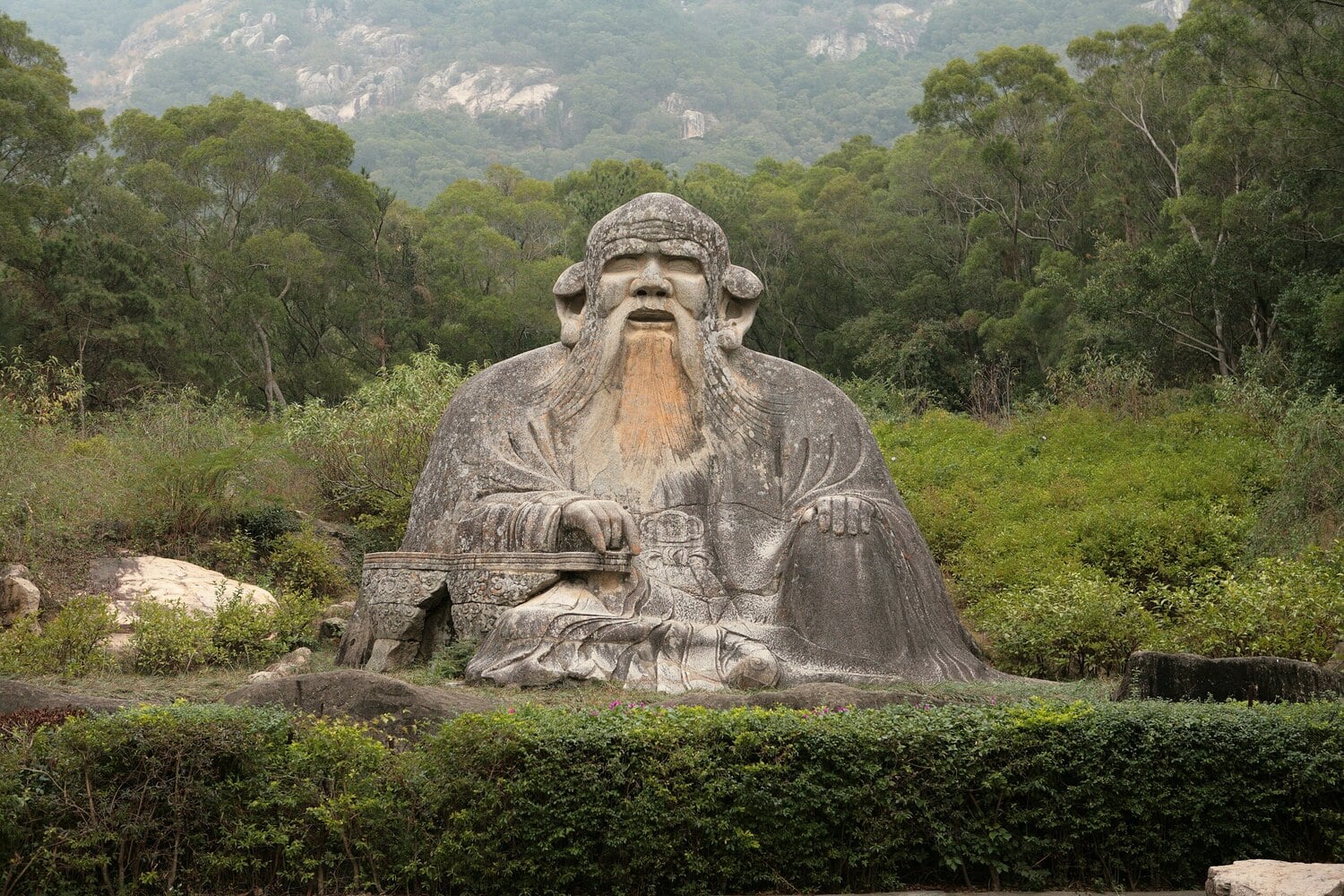The name Laozi is surrounded by legends, mysteries, and profound philosophical wisdom. He is regarded as the founder of Taoism, one of the oldest and most influential spiritual teachings of the East. His life is shrouded in myth, yet his ideas continue to inspire millions of people around the world. Interestingly, Laozi did not seek fame or power, but his philosophy of harmony, simplicity, and effortless action has become eternal. Below are fascinating facts about this great thinker that you might not have known.
- Laozi lived in the 6th century BCE, although some historians believe he may have lived a century later. His real name was Li Er, while Laozi means “Old Master” or “Wise Elder.” This name has become a symbol of ancient Chinese wisdom.
- According to legend, Laozi was born as an old and wise man. It is said that he stayed in his mother’s womb for 62 years and was born with white hair and a calm smile. This story emphasizes his supernatural nature and innate wisdom.
- Laozi is credited as the author of the famous work “Dao De Jing,” which forms the foundation of Taoist philosophy. The book consists of only 81 short chapters, yet its influence on world thought is immense. It teaches the principles of harmony, simplicity, and spiritual balance.
- “Dao De Jing” has been translated into more than two hundred languages. It is one of the most widely read books in history, second only to the Bible. Philosophers, politicians, writers, and psychologists have all drawn inspiration from its teachings.
- In Chinese, “Dao” means “the way,” and “De” means “virtue” or “power.” Laozi taught that the true way lies in simplicity, calmness, and the absence of force. The essence of his teaching is living in harmony with the natural order and with oneself.
- According to ancient accounts, Laozi served as an archivist at the royal court of the Zhou dynasty. As the keeper of the imperial library, he had access to ancient manuscripts that helped him form his own philosophical system. It was during this time that he met Confucius.
- The meeting between Laozi and Confucius has become legendary. After their conversation, Confucius is said to have remarked that he had met a dragon flying between heaven and earth. This comparison reflects the depth and spiritual power of Laozi.
- Laozi eventually abandoned his post and left the court, traveling west in search of solitude. When he reached the western border of China, the gatekeeper asked him to write down his wisdom before leaving. Laozi then composed the “Dao De Jing” and disappeared without a trace.
- Some legends claim that Laozi lived for more than 160 years. His longevity was attributed to his spiritual practices, peaceful lifestyle, and harmony with nature. In Taoist tradition, he is believed to have attained immortality.
- In Taoism, Laozi is revered not only as a philosopher but also as a divine figure. He is regarded as the embodiment of the Dao — the primal force of the universe. Temples dedicated to him throughout China often feature statues depicting him holding a scroll with a serene expression.
- Laozi’s influence extended far beyond China. His ideas about naturalness, tranquility, and self-knowledge influenced Eastern martial arts, meditation practices, and even modern psychology. Many scholars compare his philosophy to Stoicism in the West.
- A central concept in Laozi’s teaching is “wu wei,” which means “non-action.” It does not imply doing nothing but rather acting in harmony with the natural flow of things. A person who follows this principle acts effortlessly yet achieves great results.
- Unlike many philosophers, Laozi did not write about government or law enforcement. He believed that the best government is one that people barely notice. His ideas about minimal interference became the foundation for the anarchistic stream within Taoism.
- Laozi taught that the root of evil lies in excess. He believed that simplicity leads to true happiness. His views inspired numerous spiritual traditions aimed at freeing individuals from unnecessary desires.
- In Chinese art, Laozi is often depicted riding an ox. The animal symbolizes calmness, humility, and inner strength. This image has become one of the most recognizable symbols of Eastern culture.
- Many temples in China are dedicated to Laozi. The most famous is located in Henan Province near Mount Taishan. Every year, thousands of pilgrims visit the temple to honor the memory of the great sage.
- Taoism, based on his teachings, became one of the three major religions of China alongside Buddhism and Confucianism. Laozi’s principles have influenced art, medicine, politics, and literature. His teachings are still studied and practiced worldwide.
- Today, the “Dao De Jing” remains a source of inspiration for those seeking harmony and meaning in life. Its wisdom is quoted in films, books, and lectures on personal growth. The philosophy of Laozi continues to be relevant more than two thousand years later.
- Statues of Laozi can be found in many countries around the world. They symbolize respect for his wisdom and gratitude for his teachings about living in harmony with nature and oneself. His image has become a lasting emblem of Eastern philosophy and inner peace.
- Laozi’s philosophy emphasizes that everything in the universe is interconnected. A person who seeks to understand themselves must also understand nature, for they are inseparable from it. This principle of unity with nature holds even greater importance today in the context of environmental awareness.
Laozi was not only a philosopher but also a spiritual guide for humanity. These interesting facts reveal how deep and universal his teachings are. They combine philosophy, ethics, and spirituality, teaching us to live in peace with ourselves and the world. The wisdom of Laozi reminds us that true harmony begins within.





